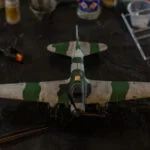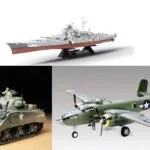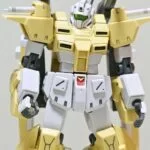miniature scales – The Full Guide (Gaming to Dollhouse)

What is miniature scale:
Miniature scale is a way to represent the size of miniature objects in relation to their real-life counterparts. The scale is represented as a ratio or fraction, with the full-size object represented as 1:1 or 1/1. The bigger the number in the ratio, the smaller the size of the miniature.
For example, a 1/16 scale miniature would be 1/16th the size of the real object it represents.
Different types of miniature models, such as gaming miniatures, railroad models, RC cars, scale models, and dollhouses, all use different scales to represent the size of objects. The scale helps to show how big or small a miniature model is compared to its full-size counterpart.
Scales in Gaming Miniatures, model kits, Railroad Models, and Dollhouses
Miniature gaming, railroad modeling, and dollhouses all use different types of scales to represent the size of objects in relation to their real-life counterparts.
In miniature gaming, scales are represented as ratios or fractions, with 1-inch scale representing the full-size object.
Railroad scales measure the proportion of a model train in relation to the real thing, with popular scales including Z scale (1:220), N scale (1:144 to 1:160), and HO scale (1:87, but can vary from 1:72 to 1:90).
Dollhouse scales are most commonly 1:12, but miniaturists often use other scales as well.
scale in miniature gaming like Warhammer and DnD
In miniature gaming, scales are represented as ratios or fractions. For instance, 1:16 or 1/16, with the 1-inch scale always representing the full-size object.
The easiest way to put this is if the miniature is 1\1 scale, it means that it is the same size as the real-life object. The bigger the number, the smaller the size.
Scale in miniatures shows you the size of an object compared to the actual item. Thus, if you buy a miniature model designed to represent a real-life item, the scale shows you how big or small the miniature model is compared to its full-size counterpart.
Scale in Model Kits
Scale model kits come in a variety of different scales, each with their own unique characteristics. Here are a few examples of different model kits and their corresponding scales:
- 1/350 scale: This is another popular scale for ship models, especially for naval ships such as battleships and aircraft carriers. A 1/350 scale model kit of a battleship would be about 12 inches long, making it larger than a 1/700 scale kit and more detailed.
- 1/72 scale: This is a popular scale for airplane and military vehicle models. A 1/72 scale model kit of a fighter jet would be about 7 inches long, making it a good size for displaying on a shelf or desk.
- 1/48 scale: This is a popular scale for airplane models, as it is a good balance between size and detail. A 1/48 scale model kit of a bomber would be about 12 inches long, making it larger than a 1/72 scale kit, but smaller than a 1/35 scale kit.
- 1/35 scale: This is a popular scale for armor models, such as tanks and armored cars. A 1/35 scale model kit of a tank would be about 14 inches long, making it a larger and more detailed model than a 1/72 scale kit.
- 1/24 scale: This is a popular scale for car models. A 1/24 scale model kit of a car would be about 8 inches long, making it larger than a 1/72 scale kit, but smaller than a 1/35 scale kit.
- 1/12 scale: This is a popular scale for motorcycle and figure models. A 1/12 scale model kit of a motorcycle would be about 2 feet long, making it larger than other scales and more detailed.
Ultimately, the scale you choose will depend on your personal preferences and the type of model you want to build. Larger scales offer more details, but they also take up more space and require more time to build. Smaller scales are more compact, but they may not have as much detail as larger scales.
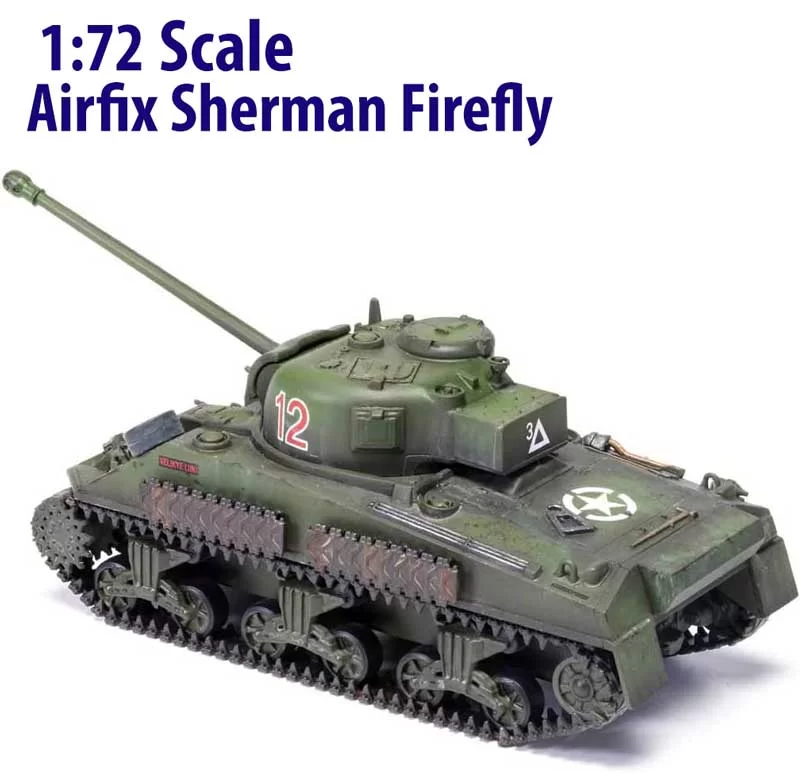

Railroad Scales
Railroad scales are a way to measure the proportion of a model train in relation to the real thing. The ratio represents the size of the model train compared to the actual train.
For example, a model train in N scale would be 1:160 times smaller than the real train. There are a variety of miniature railroad scales, each with their own ratio.
Some of the most popular railroad scales include:
- Z scale (1:220),
- N scale (1:144 to 1:160),
- HO scale (1:87, but can vary from 1:72 to 1:90),
- S scale (1:64),
- O scale (1:43 to 1:48),
- G scale (1:22 to 1:25),
- and outdoor scale (varies).
It’s important to note that within named scale groups, there may be huge variation in the ratio, depending on the manufacturer and country of origin. Additionally, some miniaturists use components from different scales in their scenes as the scales are similar, for example G scale railway components with 1:24 miniaturist scenes.
| Scale | Ratio | Description |
| Z | 1:220 | The tiniest model railway |
| N | 1:144 to 1:160 | Varies depending on manufacturer and country of origin |
| HO | 1:87, 1:72 to 1:90 | Commonly 1:87 but can vary depending on gauge and manufacturer |
| S | 1:64 | |
| O | 1:43 to 1:48 | |
| G | 1:22 to 1:25 | The largest for indoors, used in garden railroads and EnterTRAINment Junction |
| Outdoor | Varies | Even larger scales are the ride-on steam trains seen in amusement parks |
Dollhouse Scales
Dollhouse Scales are a way to represent the size of miniature objects in relation to their real-life counterparts. The most common scale used in dollhouses is 1:12, which means that for every 1 inch of a miniature object, it represents 12 inches of the real object. However, miniaturists often use other scales as well.
Finescale
Finescale refers to the level of detail and accuracy in miniature models such as dollhouse, model railroad, RC cars and gaming miniatures.
The term finescale is used to describe miniatures that are constructed to exact scale, with a high level of precision and attention to detail. This can include the use of fine materials, such as wood or metal, and intricate details like miniature furniture and accessories.
The goal of Finescale miniatures is to create an accurate and realistic representation of the real-world object or scene that it represents.
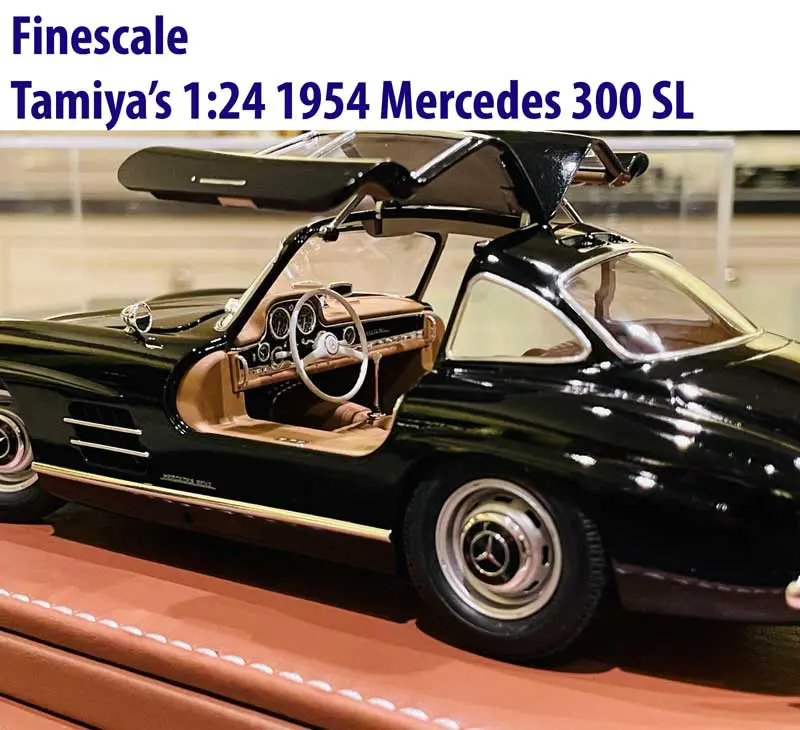

Types of Miniature Scales
There are three types of miniature scales; relative, absolute, and heroic scale miniatures. These different types of scales determine how realistic the mini’s proportions are.
Relative scale (AKA True Scale) for miniatures
Also called true scale, the relative scale of miniatures is geared towards making the minis look like the real thing but only at a smaller ratio than the original size.
For instance, creating a replica of WW2 soldiers and vehicles or medieval army units.
However, the relative scale of miniatures is less commonly used by manufacturers because they hinder the details of the model. Another problem with the realistic scale proportions of miniatures is their size.
Nobody likes to paint small faces or objects that are too small. The relative scale of miniatures will mean that the models will be a hassle to paint (especially the detailed parts), and they will be quite hard to read from afar or on the table.
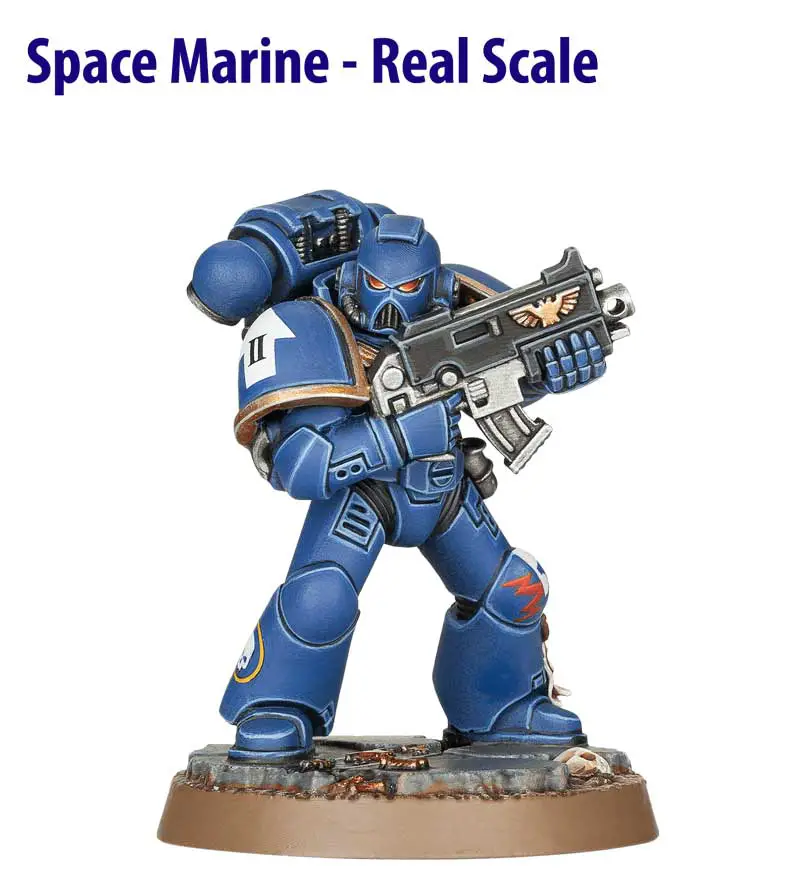

The heroic scale of miniatures
The heroic scale of miniatures is aimed toward fantasy and sci-fi-themed models. These types of miniatures come with exaggerated parts. It’s no wonder they are called “heroic scale.”
Heroic scale models often have larger hands, feet, heads, armor, and weapons.
The benefit of these characteristics is that they helped to make the miniatures more stable and solid. It also preserves detail and makes painting small details easier.
Of all the types of miniature scales, the heroic scale is most common among miniature painters as it lowers the barrier of entry for beginning hobbyists. Bigger hands, faces, and other parts of the model are easier to paint and more importantly, easier to look good with little practice or skills.
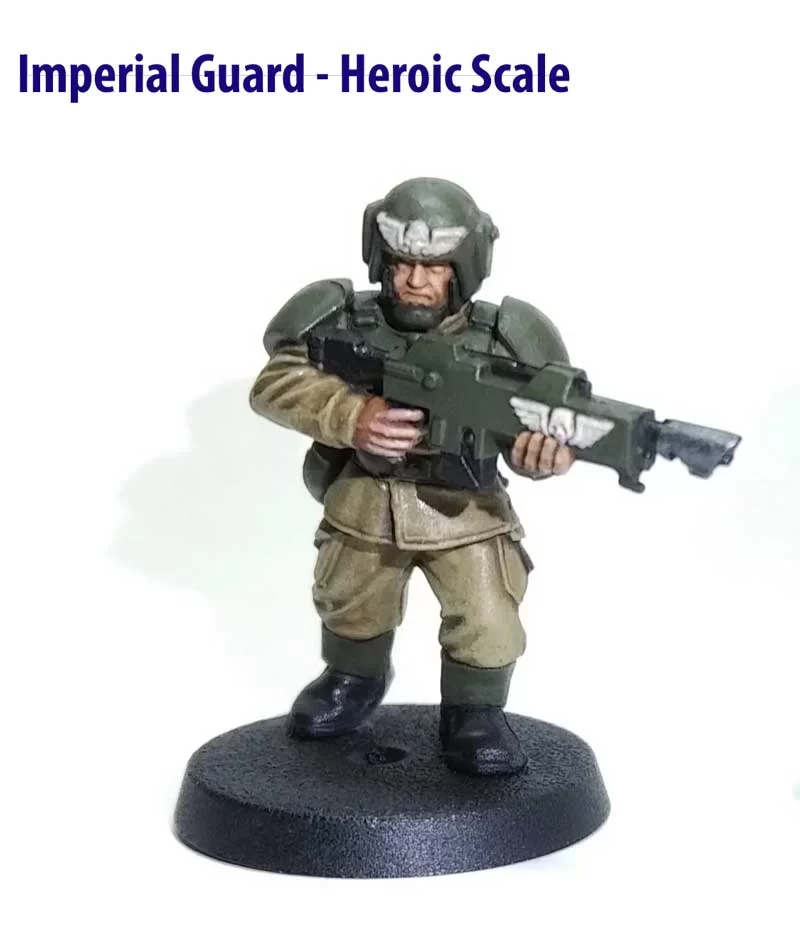

Absolute scale for miniatures
The absolute scale of miniatures is also called semi scale of miniatures. It is not a proper modeling scale because manufacturers determine the size of one mini and try to get a similar size on other models. What this means is that you won’t get a uniform if you decide to measure the models. Hence, they are not true scale or heroic scale.


Image source
What scale and size are miniatures?
In the table below, we explain the scale and size of miniatures.
| Scale Ratio | Sizes | Category | Figures |
| 1:300 – 1:285 | 5.92mm | Military Wargaming, Sci-fi, and Fantasy | Historical armor, aircraft, space fighter, and battle tank models |
| 1:200 – 1: 182 | 8.0 – 9.14mm | Fantasy, Sci-fi | WWII plastic armored vehicles and aircraft |
| 1:160 – 1:182 | 10mm | Historical models, WWII, and Sci-Fi minis | |
| 1:144 | 11.2mm | Historical or military minis | Aircraft kits in metal and plastic |
| 1:100 | 15mm | Historical wargames | Modern military metal or plastic vehicles |
| 1:87 | 18mm | Heroic 15mm Napoleon war minis | |
| 1:76 – 1:72 | 20mm | Sci-fi, historical, Fantasy wargames, model kits | WWII plastic miniatures (Aircraft, ground vehicles, soldiers) |
| 1:64 – 1:56 | 25 – 35mm | Warhammer, tabletop wargames | Warriors, vehicles, terrains, artilleries |
| 1:48 | 36mm | Military wargame | Vehicles |
| 1:35 – 1:32 | 46 – 54mm | Military models | Vehicles and figures |
| 1:18 | 75mm | Sci-Fi, Fantasy | Figures |
What are the most popular scales for Gaming miniatures?
Gaming miniatures have a broad range when it involves their scales.
The most common scales are the 1:100 scale, 1:72 scale, 1:56 scale, 1:48 scale, and 1:35 scale. 1:300 scale miniatures are also popular when selecting smaller-sized models. However, the most common scale for minis is the 1/64 (28mm) scale model.
1:64 scale miniatures are typically used in tabletop games, from Warhammer to Dungeons and Dragon wargames, as they sit comfortably on the table.
While some miniature wargames use smaller scales, like 1:100 (15mm), to represent more troops on the field, most miniatures are 1:64 scale because anything larger would require a larger game board.
Is the scaled model accurate to the represented ‘figure’?
When a model is scaled, it takes on all the characteristics and features of the full-size subject (called the “prototype”). Hence, they will accurately represent the original object no matter their scale.
The only clause to this is with the heroic scale of miniatures. This scale allows manufacturers to add more features to the model to make them look more dream-like.
The importance of Scale in Warhammer, D&D, and Miniature Gaming
When dealing with Warhammer and D&D miniature games, scale is an important feature that helps demonstrate essential standards like the behavior and properties of the model so that they fit well into the grid of their various tabletop gaming.
Besides this, another reason scale matters for Wargaming and D&D tabletop games is that it helps you determine the dimensions of the object without the need to examine the original object itself.
How the scale of a Gaming miniature is determined
The scale of miniatures is decided by measuring the model from a reference point, which could be at the eye level, the top of the head, or the top of the figure, depending on the manufacturing company.
- The top of the figure
This measurement tells the total height of the model but can be quickly frustrating if the model has different-sized headwear or head accessories.
- The top of the head
Measuring to the top of the head is often common among many brands, and as the top of the figure measurement pattern, can be a challenging process, especially when the figure wears complicated headwear.
- The Eye Level
Unlike the other two, you can determine the miniature scale by measuring from eye level since the miniature eyes are always visible. However, determining the scale of the miniature using this method can be difficult when measuring non-humanoids as they don’t have eyes.
What scale are 28mm miniatures?
28mm miniatures often fall between the 1:56 scale and to 1:64 scale depending on the brand and the scale proportions. They are the most common sizes you will find when buying miniature models.
For instance, a miniature will have a height of 28mm if it uses a realistic scale but can seem larger than this if it uses heroic scale.
What scale are 32mm miniatures?
32 mm miniatures are 1/56 scale.
The increase in height doesn’t mean much. However, a miniature model won’t take the typical 28mm size but use 32mm measurements if it comes with heroic proportions.
How do you know what scale is your miniature?
If you intend to have a large collection of miniatures, you want to know how to measure their scales. It would be weird if similar miniatures all had slightly or vastly different dimensions. Standardized miniature scales became prominent in the 1970s, making it easy for people to get more accurate and interchangeable pieces for their collections.
So, if you want to know the scale of a Warhammer or DnD model, the simple solution is to take their measurements and scale them up to human size by trial and error.
A straightforward way around this is to compare the size of the miniature kit to the original model.
- First, identify the type of project you will be working on. Is it a wargame, DnD, Warhammer, or fantasy model?
- Find the size of the original object
- Measure the size of the miniature kit
- Then, divide the size of the real object by that of the miniature model
In simple words, if the original object is 180cm (1800mm) high and the figure is 3cm (330mm) high, you will divide 180 by 3 to get the scale of the model. Thus, since the answer is 60, the scale of the model will be 1:60.
Are all miniatures on the same scale?
Miniatures do not have the same scale.
As mentioned in the ‘how the scale of a miniature is determined’ section, one manufacturer may use feet to eyes another may use feet to the top of the head or top of the figure when determining the scale of the figure.
These different measurements are acceptable but also mean you will get different heights for the same miniatures. On the other hand, each miniature has its defining characteristics that make them tall or small. Tanks and humanoids won’t have the same scale because one is taller than the other.
Are all miniatures the same size?
As with scale, the size of miniatures varies with the faction and brand.
Similar miniatures can have a 30% variance due to their product line. So, for a 28mm, 1/56 scale model, this would mean that the mini can have sizes from 24-32mm.
Simply put, if you buy a DnD mini, don’t expect them to be the same size as Warhammer, Age of Sigmar, Reaper, primaries, Space marines, Lord of the Rings, or Wizkids miniature models.
Examples of different figures and their size and scale
| Figure | Scale | Size |
| Adepta Sororitas Battle Sister Noyalle | 1:18 | 75mm |
| Basilean Crossbowman | 1:56 | 28 – 32mm |
| The Walking Dead: All Out War | 1:56 | 28 – 32mm |
| Arkanaut Admiral (Kharadron overlords) | 1:56 | 28mm |
| Sister Ailene Human Cleric | 1:56 | 32mm |
The Scale And Size Of Gaming miniatures
What scale size are Warhammer 40k miniatures
Determining the exact scale of Warhammer 40K miniatures is complicated because of the heroic scale proportions their model uses. Hence, the proportions of Warhammer 40K models are pretty much irregular.
Technically, most Warhammer models are 1/64 scale (28mm but closer to 32mm and 35mm), but they can also be a 1/56, 1/48, or 1/35 scale, depending on the model.
The scaling measurements of Games Workshop Warhammer models are quite different from the conventional scales. For instance, if you compare the 1/64 scale of Warhammer 40K models to the conventional fraction scaling, it is somewhere around 1/56 than 1/64. Still, this distinction varies depending on the Warhammer 40K model as their vehicles also have a different scaling. Consider the following:
- What is the scale of Warhammer primaries?
Warhammer primaries are about as tall as a standard Space Marine but with a height closer to Custodes. Still, they use the standard 1/56 heroic scale of most Warhammer models.
- What scale are space marine
Classic Space marines are 1:64 scale, and their old molders were closer to a 1:72 scale. However, recent productions of Space Marines have adapted the standard 1:56 (28mm / 32mm) scale of most Warhammer 40K models.
- What scale is Warhammer Age of Sigmar
Warhammer age of Sigmar models is still a 28mm (1/56) scale model but is closer to 32mm these days.
What this means is that models made and designed for Age of Sigmar will be on a larger scale than any of the older models. The simple reason is that they are crazily detailed and have beautiful sculpts.
For instance, Khorne Blood Warriors are bigger than Chaos Warriors, and Sylvaneths are bigger than wood elves. On the other hand, Stormcast Eternals, Ogres, and the Ironjawz are super huge and closer to a 35mm scale.
- What scale are Warhammer vehicles?
Games Workshop also uses a 1:56 scale for most of their Warhammer vehicles, whether space marines or primaries.
For instance, the Adeptus Mechanicus Sydonian Dragoon, Adeptus Mechanicus Onager Dunecrawler, and the Blood Angels Predator Tank scale 1:56. However, like other Warhammer figures, their height may range from 28mm to 32mm.
- What scale is epic 40k
In Epic 40K, humanoids are represented as 6mm high figures as opposed to other Warhammer 40K models. For instance, Epic Armageddon uses 6mm miniatures.
Epic Warhammer 40K models are often used in armies consisting of hundreds of soldiers and tanks. Due to the large size of their battles compared to the few squads and troops in other Warhammer 40K battles, spic miniatures often have a small size and scale.
- What scale are WFB (Warhammer fantasy battle)
Traditional and modern Warhammer fantasy battle models use a 1:56 scale. However, their size may vary.
Traditional Warhammer fantasy battle minis were in 28mm heroic scale. But, Games Workshop has pushed the size of their fantasy minis to 32mm heroic scale so they can fit more detail.
What scale and size are D&D miniatures
There is no absolute scale for DnD. However, DnD miniatures can have scales at 1:72, 1:56, and 1:35. Their sizes range from 25mm, 32mm, and 42mm, depending on the figures.
- What scale are reaper miniatures
Reaper miniatures, from their Bones Spirit of the Forest to their Eldritch demon and Dark Heaven legends, come in the 25mm heroic scale.
- What scale are wizkids miniatures
Wizkid’s miniatures typically fall within the 1/64 heroic scale.
They are similar to Reaper bones DnD miniatures. However, they range between 25mm to 33mm depending on the figure. Their W14 Saber-Toothed Tiger comes on a 25mm scale, while their giant Octopus has a height of 33mm.
- What scale are BattleTech miniatures
BattleTech DnD miniatures generally use a 1/285 or 6mm scale, although the consistency of this scale will vary with the miniatures.
- What scale are zombicide miniatures
Zombicide miniatures are 1:50 scale, with Realistic proportions.
According to the Guillotine Games website, their Zombicide miniatures are 32mm scale. But, if you try mixing them with miniatures, like the”Walt” survivor (28mm) mini, Zombicide minis look tiny and won’t fit reasonably well. This leads me to believe they are actually 30mm miniatures.
What scale is the star wars legion
The scale of Star Wars: Legion miniatures often ranges between 1:40 to 1:50 (35mm) scale, with Realistic proportions. For instance, their Wizards of the Coast Grievious’ Wheel Bike have a 1:43 scale, their Crab droid is a 1:46 scale, and the figures are a 1:50 scale.
What scale are LoTR miniatures (lord of the rings)
LOTR figures like the Knight of Umbar, Elves, and even the Mordor Orc, model are 1:64 (25mm) relative scale.
Lord of the Ring models are slightly smaller and use relative scale compared to most D&D miniatures. They don’t have oversized weapons, heads, and hands like Warhammer models.
Summary of size and scale of D&D miniatures
| Characters | Scale | Size |
| Reaper | 1:56 | 25mm |
| Wizkid’s minis | 1:64 | 25 – 33mm |
| BattleTech | 11:286 | 6mm |
| Zombicide | 1:50 | 30mm |
| Star Wars Legion | 1:40 – 1:50 | 35 – 40mm |
| Lord of the Rings Minis | 1:64 | 25mm |
Conclusion
The scale of miniature models is a big deal, especially as you move from one wargame or D& D mini to the next. While most manufacturers use the standard 28mm 1/56 scale for their miniatures, today Warhammer and D&D minis use varying scales and sizes from 1/72 relative scale to 1/56 or 1/48 heroic scale. So, if you’re looking for Wargame and Sci-Fi minis for your next collection, we hope this guide will help you understand and determine the scale of your minis better.
Sources
https://en.wikipedia.org/wiki/Miniature_model_(gaming)
https://en.wikipedia.org/wiki/List_of_scale_model_sizes
https://en.wikipedia.org/wiki/Epic_(game)


